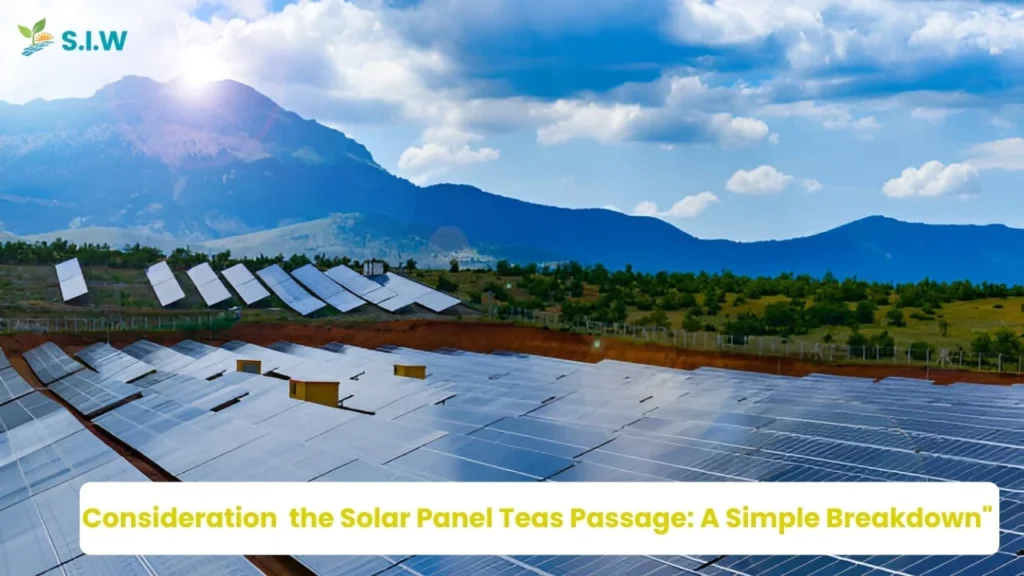olar panels capture sunlight through photovoltaic cells, converting it into electricity for homes and businesses. This energy flows through an inverter, turning it into usable power. By generating clean, renewable energy, solar panels help reduce dependence on traditional sources, promoting a more sustainable future. Understanding this process highlights the efficiency and eco-friendliness of solar energy systems.
Breaking Down the Solar Panel System
Solar panels are not complicated when broken into their core components. Here’s a quick look at how each part contributes to the process:
- Solar Cells: Also known as photovoltaic (PV) cells, these are the building blocks of the solar panel system. They capture sunlight and transform it into electricity.
- Inverter: Converts direct current (DC) produced by the solar cells into alternating current (AC), which powers your home.
- Battery Storage (Optional): Stores any unused solar energy for later use, ensuring you always have power—even at night or on cloudy days.
Solar Panels Are an Efficient Choice
Solar energy is one of the most efficient and environmentally friendly options for generating electricity. Much like brewing tea from the same leaves multiple times, solar panels can produce energy for decades with minimal maintenance. Once installed, they operate almost autonomously, requiring little input from the homeowner. For example, when I switched to solar, my energy bills dropped significantly, and I barely noticed the system working—except when the monthly savings appeared.
Solar Panels Handle Energy Throughout the Day
The process of generating solar energy happens in stages throughout the day. Each phase ensures a steady and reliable power supply for your home.
- Morning: As the sun rises, the panels begin absorbing sunlight. Although not at peak efficiency, they start generating electricity to power small appliances.
- Afternoon: The midday sun allows the panels to work at maximum capacity. This is the time when most of your home’s electricity needs are met.
- Evening: As the sun sets, solar energy production slows down. However, with a battery system, stored energy from the afternoon is used to keep things running.
Normal Challenges and Practical Solutions
Solar panels are remarkably reliable, but there are a few challenges to be aware of. These challenges can be easily addressed with the right planning and maintenance.
Weather Fluctuations
Since solar panels rely on sunlight, their efficiency can decrease on cloudy days. However, installing a battery system allows you to store extra energy from sunny days, ensuring a constant power supply even during less sunny periods.
Initial Cost
The cost of purchasing and installing solar panels can be high. Yet, local and federal tax incentives can greatly reduce this financial burden. Over time, the savings on energy bills outweigh the initial investment, providing long-term benefits.
Space Considerations
Solar panels require ample space on your roof or property. To maximize efficiency, it’s important to place them in a location with consistent, direct sunlight.
Optimizing Your Solar Panel System for Maximum Efficiency
While solar panels are naturally efficient, there are several ways to improve their performance.
- Regular Maintenance: Keeping your solar panels clean and free of debris ensures they continue to absorb sunlight efficiently.
- Monitor Energy Usage: Keeping track of your energy consumption can help you better manage the energy generated by your solar panels.
- Upgrade Inverters: Modern inverters can help improve energy conversion efficiency, ensuring that as much sunlight as possible is converted into usable electricity.
Solar Energy as a Long-Term Investment
One of the key benefits of solar energy is its long-term financial and environmental impact. Once installed, solar panels can last for 25 years or more, delivering clean energy every day. It’s like investing in a self-sustaining system that not only reduces your carbon footprint but also saves you money over time.
- Reduction in Energy Bills: Over time, solar panels pay for themselves through the money saved on electricity bills.
- Increased Property Value: Homes with solar panel systems tend to have higher resale values, as future homeowners see the benefit of lower energy costs.
- Environmental Benefits: Solar energy is a renewable source of power, meaning it doesn’t deplete natural resources or pollute the environment.
Solar Panels in My Own Experience
When I first installed solar panels, I was skeptical about how much difference they could make. However, after a few months, I began to see the long-term benefits. My energy bills dropped, and I felt better knowing that I was contributing to a cleaner environment. Plus, during a power outage, my battery storage system kicked in, ensuring I had electricity when others in the neighborhood didn’t.
Summary of Key Points( Finally)
- Solar panels provide a seamless passage of energy from sunlight to your home’s electrical system.
- The core components of a solar panel system include photovoltaic cells, inverters, and optional battery storage for excess energy.
- While solar energy has upfront costs, tax credits and energy savings make it a wise long-term investment.
FAQs
What are the key components of a solar panel system?
Photovoltaic cells, an inverter, and optional battery storage are the main components of a solar panel system.
How do solar panels generate electricity?
Solar panels use photovoltaic cells to convert sunlight into direct current, which is then turned into alternating current by an inverter.
How long do solar panels last?
Solar panels can last for 25 years or more with proper maintenance.
Do solar panels work during cloudy days?
Yes, solar panels still generate electricity on cloudy days, though at a reduced capacity. Batteries can store excess energy for later use.
Are solar panels worth the initial cost?
Yes, while solar panels have an upfront cost, the long-term savings on energy bills make them a worthwhile investment.








